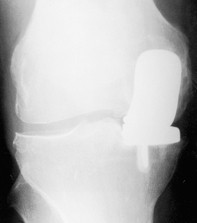Peer Reviewed
Feature Article Orthopaedics
Advances in treatment for osteoarthritis of the knee
Abstract
Osteoarthritis is the most common form of arthritis. Properly treated, patients can enjoy good joint function and maintain their desired level of activity. This article discusses the relative value of treatment options available today for osteoarthritis of the knee.
Key Points
- There is no disease-modifying drug for osteoarthritis. Mild and moderate symptoms may be responsive to nonpharmacological interventions or simple analgesics, but many patients resort to anti-inflammatory medications.
- Studies of glucosamine hydrochloride–chondroitin sulfate in patients with osteoarthritis suggest that these compounds can produce prolonged symptom relief, but no evidence for disease modification in vivo has yet been established.
- Arthroscopic debridement has a limited and specific role for the treatment of osteoarthritis. Abrasive arthroplasty yields even less predictable outcomes and is not generally recommended.
- Some 20 to 30% of patients treated by high tibial osteotomy require conversion to a total knee replacement. Osteotomy may maintain the patient’s active lifestyle and deter the need for replacement surgery for a number of years.
- More than 50% of cases of knee arthrosis affect a single compartment of the knee. Unicompartmental knee replacement is an effective treatment for the condition. The minimally invasive surgical technique increases the appeal of this form of treatment but is more technically demanding.
- Total knee replacement is the definitive treatment for advanced arthritis. More than 95% of total knee replacements are expected to remain functioning 15 years after implantation, but there are ongoing concerns with articular wear and related particulate-induced osteolysis.
Purchase the PDF version of this article
Already a subscriber? Login here.

